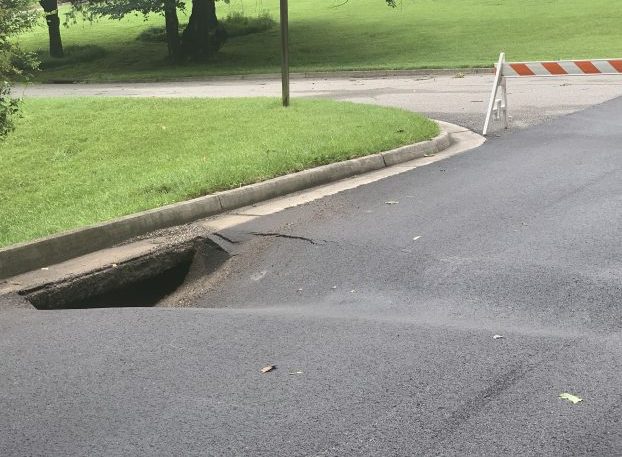Tracking Tobacco Commission grants
Published 7:05 pm Tuesday, August 4, 2015
QUESTION: What happened to the grant money for Ag-Renewable Resources in Cumberland County?
Only 44 percent of the $1.76 million-plus in grants awarded to develop the Cumberland Business Park and help a renewable-energy firm set up shop in Cumberland has been allocated.
Trending
Though less than half of the money from the Virginia Tobacco Commission was spent, the grants resulted in the development of a 72-acre home for new industry in Cumberland and a 220-by-100-by-17-foot building — one that the county is exploring erecting.
Owned by the Cumberland Industrial Development Authority (IDA), the pre-fabricated building lies in pieces in a kit in the park on Poorhouse Road, according to County Attorney and Administrator Vivian Seay Giles.
The IDA paid over $157,595 for the building using part of a $375,000 grant from the Tobacco Commission. The grant was one of six that the commission granted the IDA for development of the now-defunct Ag-Renewable Resources (ARR) LLC and the county’s business park, according to a commission report titled “Cumberland Business Park grants that related to Ag-Renewable Resources.”
“We’re still looking at ways to do that,” Giles said of erecting the building, noting that the county had received some preliminary cost estimates.
Before folding, ARR and its partners, with support from the IDA, sought to develop a regional poultry digester facility to create renewable energy from chicken litter.
Some $771,365 was allocated in grants for the development of ARR and the business park, according to a commission report. The money was spent through the IDA to purchase the land for the business park, the steel building, six 30,000-gallon storage tanks for ARR and site improvements, developments, engineering and surveying for the park, according to the report.
Trending
Regarding the storage tanks, which ARR never used, the report notes that the IDA received permission to sell the tanks, and returned the sale profits to the commission. The commission, in turn, allowed the IDA to use the funds for additional costs for site improvement of the park.
Many of the grant funds were “deobligated,” or never disbursed, according to the report. $679,835 was deobligated from one grant (part of which was for the purchase of a digester vessel for ARR) while a $25,000 balance from another is “expected to be deobligated,” the report noted.
Within the closed grants, the money that was never allocated as part of the award or paid was deobligated, said the commission’s Sarah Capps.
Out of the grants closed, more than $716,600 was deobligated and unspent.
“Balances on grants that are closed get returned to the program budget … and are then reallocated to new grants,” she said.
The first grant was awarded in 2010 for the purchase of the park property while the latest grant awarded was in 2013 for construction of an access road in the business park. The two latest grants haven’t been paid yet, according to the report.
In January 2014, The Herald reported that the eight members of ARR made the decision to wind up business in late 2013. Partner Rich Baltimore said at the time that the project was no longer viable, citing looming deadlines and difficulty acquiring additional funding.
In 2014, ARR had hoped to offset remaining liabilities of $75,000 — including $20,000 in personal loans from partners — by selling the unused equipment.
According to Giles, a request from the partners to the Tobacco Commission for repayment of some of their investments and loans was denied. “They did request to be reimbursed [for] loans made to the company … from the tobacco commission,” said Giles.
Currently, there are no businesses located in the park, she said.
Fourth Street intersection to turn left on High Street. So, yes, it’s a long turning lane.
The extended turning lane has been in place for a number of years, but there is that little driveway into the Federal Building at the Fourth Street traffic light that gives some motorists pause.
Hogan believes the turning lane was “extended because … it’s a real short block there between Fourth Street and High Street.” It could only accommodate about two cars between Fourth and High streets. Without extending the turning lane to Midtown Square “you would block up everything heading north for three or four cars trying to turn left.”
While there is some confusion on when motorists should get over, one problem officers have seen is motorists traveling south on Main Street crossing the double yellow line and using the northbound lane as a turning lane to enter Midtown Square.
“So what they’re actually doing is they’re sitting in oncoming traffic,” Hogan said.
He offered this rule of thumb: As long as you keep the double yellow lines on your left, you’re OK.
“Now if you’re traveling and you find a double solid line on your right, you’re in the wrong lane,” Hogan said.
Have a question you would like our staff to answer? Email us at youasked@farmvilleherald.com and we’ll do our best to find the answer.





